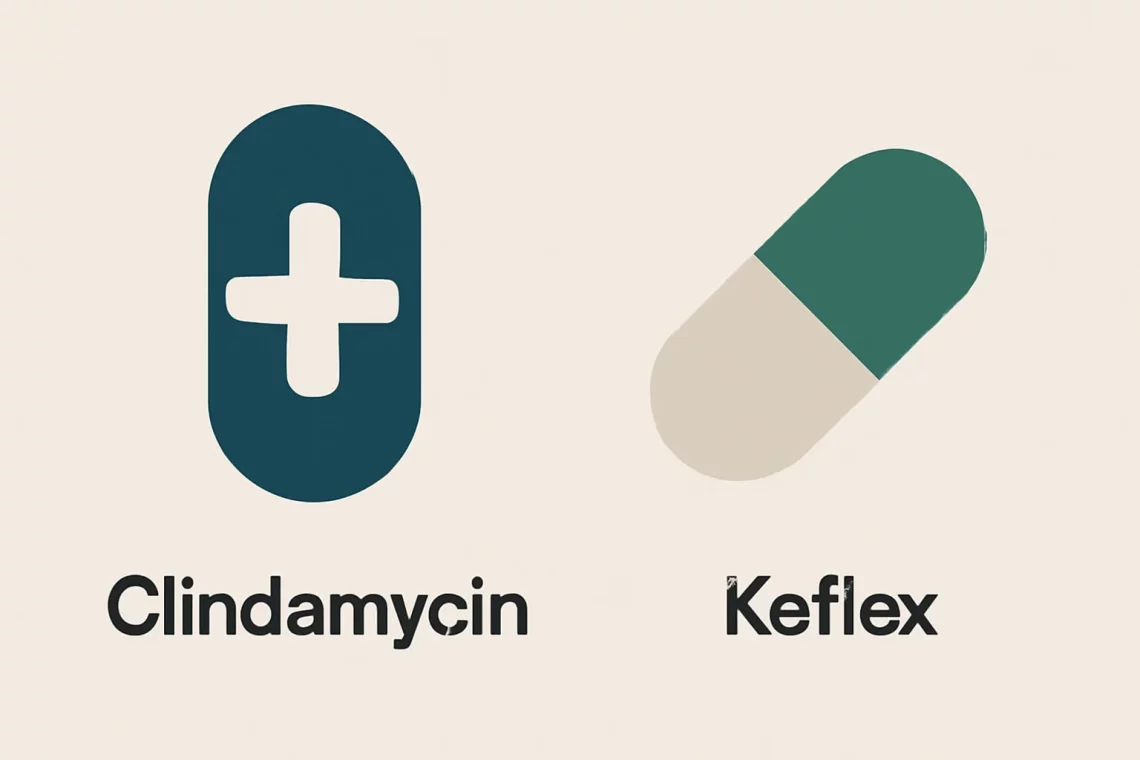
Clindamycin vs Keflex: Which Antibiotic Is Right for You?
Clindamycin and Keflex are two antibiotics commonly used to treat bacterial infections. While both medications belong to different classes of antibiotics and target various types of bacteria, they play crucial roles in managing infections. Understanding the differences and similarities between these medications can help patients and healthcare providers make informed choices regarding treatment options.
In recent years, antibiotic resistance has emerged as a significant public health concern, highlighting the importance of selecting the appropriate antibiotic for each specific infection. Clindamycin, a lincosamide antibiotic, is often prescribed for serious infections caused by anaerobic bacteria and certain types of streptococci and staphylococci. On the other hand, Keflex, the brand name for cephalexin, is a first-generation cephalosporin antibiotic that is effective against a broad range of bacteria, particularly those causing skin and respiratory tract infections.
The choice between Clindamycin and Keflex often depends on various factors, including the type of infection, patient allergies, and previous antibiotic use. As the world of medicine continues to evolve, it is essential for patients to understand the nuances of these medications to ensure optimal treatment outcomes.
Mechanism of Action
The mechanism of action of antibiotics is a critical factor in determining their efficacy against specific bacteria. Clindamycin works by inhibiting bacterial protein synthesis, effectively stopping the growth and reproduction of bacteria. It binds to the 50S ribosomal subunit of the bacteria, preventing peptide bond formation and halting the production of proteins necessary for bacterial survival. This mechanism makes Clindamycin particularly effective against anaerobic bacteria, which thrive in low-oxygen environments, and certain gram-positive cocci.
In contrast, Keflex (cephalexin) operates by disrupting the synthesis of the bacterial cell wall. It binds to specific penicillin-binding proteins located in the bacterial cell membrane, leading to cell lysis and death. Keflex is particularly effective against gram-positive bacteria, including Streptococcus and Staphylococcus species, and some gram-negative bacteria. This cell wall disruption is crucial for the antibiotic’s effectiveness, especially in treating infections that involve skin and soft tissues, respiratory tract infections, and urinary tract infections.
Understanding these mechanisms not only aids in selecting the right antibiotic but also in comprehending potential side effects and interactions with other medications. For instance, Clindamycin may lead to gastrointestinal disturbances due to its impact on gut flora, while Keflex may have implications for patients with a history of penicillin allergies, as there can be cross-reactivity between cephalosporins and penicillins.
Indications and Uses
Clindamycin and Keflex are prescribed for various indications, reflecting their unique properties and effectiveness against specific types of infections. Clindamycin is particularly beneficial for treating serious infections caused by anaerobic bacteria, such as those found in abscesses, dental infections, and certain types of pneumonia. It is also commonly used for skin and soft tissue infections, especially when caused by methicillin-resistant Staphylococcus aureus (MRSA) due to its ability to penetrate well into tissues.
Keflex is frequently utilized for a broader range of infections, including skin and soft tissue infections, respiratory tract infections, and urinary tract infections. Its effectiveness against a wide array of gram-positive bacteria makes it a go-to choice for community-acquired infections. Additionally, it is often prescribed for patients who may not have access to intravenous antibiotics, as Keflex is available in oral formulations, allowing for convenient outpatient treatment.
Each antibiotic has its own prescribing guidelines, and healthcare providers consider various factors such as the type of bacteria causing the infection, the patient’s medical history, and potential drug interactions. While both Clindamycin and Keflex are effective in their respective domains, understanding their specific uses is crucial for optimal patient care.
Side Effects and Considerations
Like all medications, Clindamycin and Keflex come with potential side effects that patients should be aware of before starting treatment. Clindamycin is known to cause gastrointestinal disturbances, including diarrhea, nausea, and vomiting. In some cases, it can lead to a more severe condition known as Clostridium difficile-associated diarrhea (CDAD), which occurs when the normal gut flora is disrupted. Therefore, patients receiving Clindamycin should be monitored for gastrointestinal symptoms and advised to report any severe diarrhea.
On the other hand, Keflex can also cause gastrointestinal issues, such as diarrhea and nausea, though it may also lead to allergic reactions in patients with penicillin allergies. Common side effects include rashes, itching, and in rare cases, anaphylaxis. Patients who are allergic to penicillin should inform their healthcare provider before starting Keflex due to the possibility of cross-reactivity among beta-lactam antibiotics.
When considering either medication, healthcare providers take into account the patient’s complete medical history, current medications, and any allergies. Additionally, renal function may influence the prescribing of Keflex, as it is primarily excreted through the kidneys. Adjustments may be necessary for patients with impaired kidney function to avoid potential toxicity.
Resistance and Future Implications
Antibiotic resistance is a growing concern in the medical community, impacting the effectiveness of both Clindamycin and Keflex. The overuse and misuse of antibiotics have led to the emergence of resistant bacteria, making it essential for healthcare providers to use these medications judiciously. Resistance mechanisms can vary; for instance, some bacteria may produce enzymes that break down antibiotics, while others may alter their cell walls to prevent antibiotic entry.
Clindamycin resistance, particularly among staphylococci, has been documented, prompting healthcare providers to consider susceptibility testing when prescribing this antibiotic. Similarly, Keflex’s effectiveness against certain strains of bacteria may be compromised due to resistance, especially among organisms that are commonly encountered in community-acquired infections.
As the landscape of bacterial infections continues to evolve, ongoing research is crucial to develop new antibiotics and alternative treatment strategies. Healthcare providers are encouraged to stay updated on local resistance patterns, ensuring that they prescribe the most effective treatment for their patients.
In conclusion, both Clindamycin and Keflex have essential roles in the management of bacterial infections. Their unique mechanisms of action, indications, and potential side effects must be understood to optimize patient care. As antibiotic resistance becomes a more pressing global issue, responsible prescribing practices will be paramount in preserving the efficacy of these vital medications.
**Disclaimer:** This article is for informational purposes only and does not constitute medical advice. Always consult a healthcare professional for medical concerns or questions regarding treatment options.




